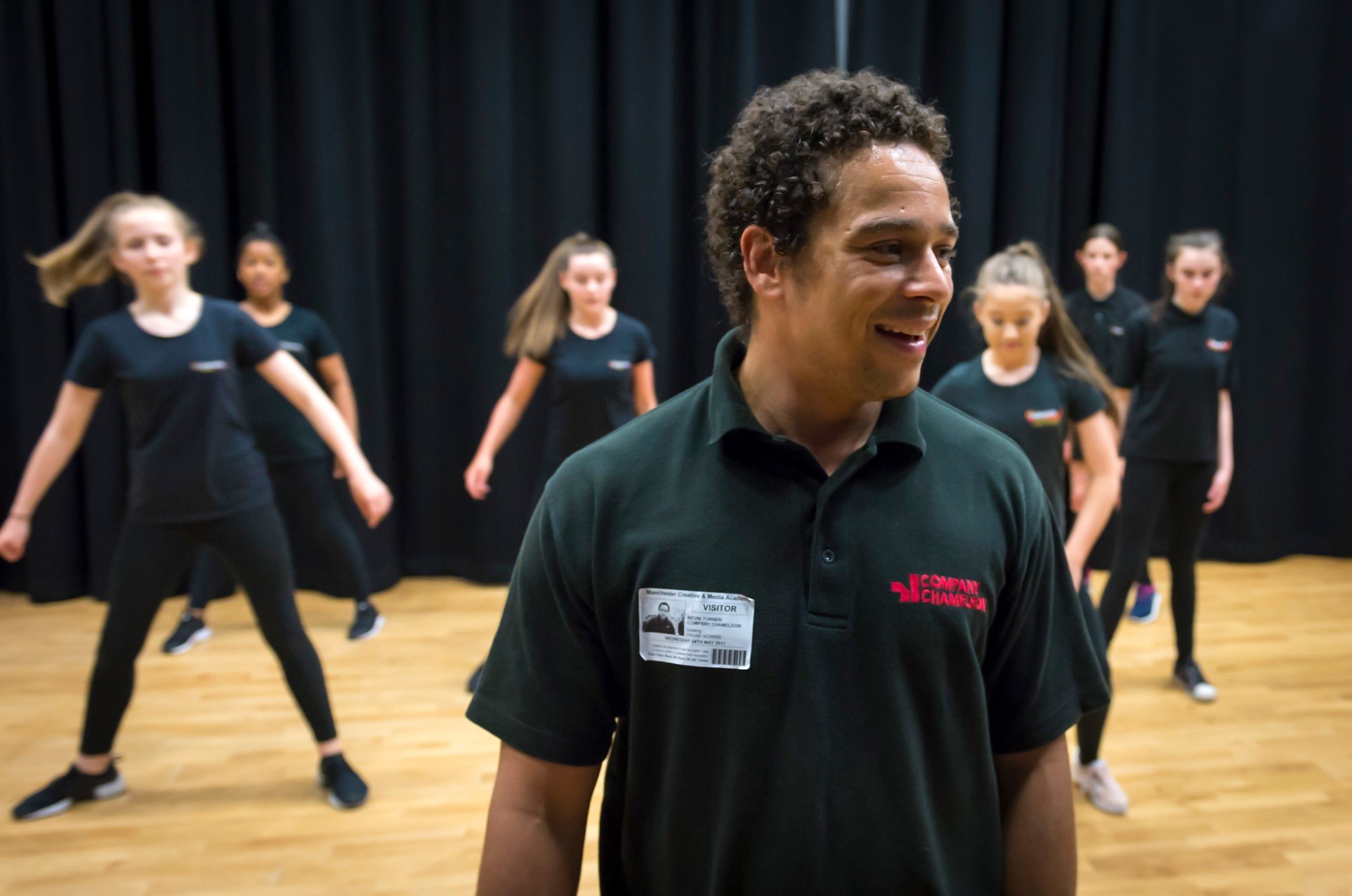
Exploring mental health through dance
A project in three Manchester secondary schools engaged students in discussions about mental health and enabled them to develop their own creative responses through dance and movement. Kevin Edward Turner tells the story.
Company Chameleon recently offered a contemporary dance experience to three large secondary academies in the Co-op Academies Trust in north Manchester. The project explored our production Witness This, which tells my personal story of experiencing bipolar disorder and the impact it has had on me and my family.
Frank Norris, Director of the Co-op Academies Trust, said: “The theme for the collaboration became clear very early on. The ideas in Witness This matched well with the charitable work we were engaged in with the British Red Cross regarding loneliness. We felt the mental health theme would be excellent for the young people and would supplement the existing work being undertaken by the academies in the area.”
What we need to develop in young people are the creative juices and the opportunities to work with others in finding new solutions and outlooks
The project offered 100 Key Stage 3 pupils the opportunity to watch a live performance of Witness This before taking part in creative workshops that explored the themes in the piece. Each school then created its own works in response, with pupils expressing their thoughts surrounding mental health. Teachers used a resource pack to explore the work and its core themes, as well as a toolkit to feed into their own creations.
The project culminated by bringing the three academies together to perform alongside the professional company for an audience of family and friends.
Discussing mental health
Watching the performance and experiencing the workshop gave the young people something tangible to understand and talk about, creating the perfect platform to open a discussion around mental health. I also felt that because I was able to share my own personal story with the young people, and that I am happy, healthy and solid in my wellbeing, they could explicitly see that mental health and illness is something that can be managed and recovered from.
As part of the project, the young people involved had the opportunity to engage in discussions about mental health, along with the time to reflect and develop their own creative responses to the topic through dance and movement.
One of our project objectives was to dispel any misconceptions or taboos around mental health, and to give the young people the opportunity to discover that talking about how you think and feel is a great way to keep in a healthy mental state. The project helped them understand that your mental health is just as important as your physical health and that both need nurturing and supporting. The young people took away the most important point of all – that it is always good to talk about how you feel and think.
Frank Norris says: “The impact of the project was reflected in the comments made by students and staff during and after the work. Many students found they were able to talk more openly about their feelings regarding mental health and had experienced an emotional connection so that they could better support others. The staff felt inspired and enjoyed the collaborative work with the professional dancers as well as having a chance to work with like-minded teachers.”
New outlooks
Mental health is an issue that can be difficult to approach and discuss. Dance can break down this barrier as it allows us to express ourselves without using words: how we move our bodies can say so much. Dance allows us to explore complex ideas, feelings and emotions, and find creative ways to express that in movement.
As Frank Norris says: “Dance provides a vehicle for young people to tease out and discover an emotional response for themselves. It doesn't require someone to talk directly to them – it just allows a door to open to their creativity. At a time when we hear so much about the need to support STEM subjects, it feels as if the arts have been somewhat relegated to a second-tier position. What we need to develop in young people are the creative juices and the opportunities to work with others in finding new solutions and outlooks. Dance enables this and can play an important part in strengthening all other areas of the curriculum.”
In terms of measuring project impact, 87% of participants said their understanding of mental health had changed since been involved in the dance project, and 97% would recommend the project to other young people. As part of the project, we worked with Gabrielle Ivinson, Professor of Education and Community at Manchester Metropolitan University, to evaluate students’ understanding of mental health before and after the project. We aim to use this evaluation to evolve and strengthen the project, and how it supports the PSHE curriculum for Key Stage 2+, with the aim of offering it to schools nationally from 2019 onwards.
One of the highlights was the performances at the end. They were watched by over 250 parents and friends of the children, and for many it was the first contemporary dance performance they had ever seen. Their joy and pride were clearly evident and this was rewarding to see.
Kevin Edward Turner is Co-Artistic Director of Company Chameleon.
www.companychameleon.com
Tw: @chameleon_info
Join the Discussion
You must be logged in to post a comment.